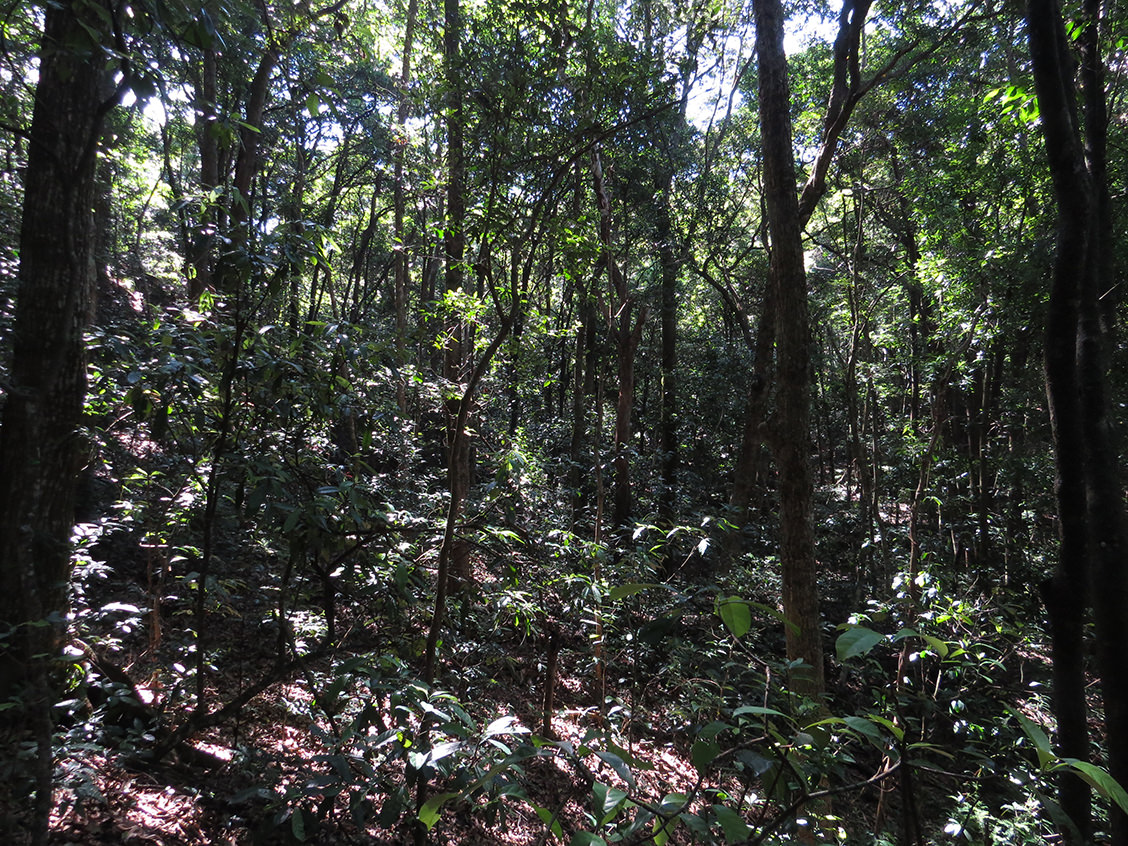
Tropical forests are among the most diverse ecosystems on earth. However, our understanding of the occurrence and ecology of most of the plant, animal and fungal species found in these forests remains extremely limited. Alarmingly, the rate at which tropical forests are being destroyed means that we will not be able to understand the full breadth of their composite diversity, nor the true complexity of their interactions with global biogeochemical processes, before they have been drastically reduced in extent.
In many places across tropical Southeast and East Asia, forests have been replaced by oil palm, rubber and eucalyptus plantations. But even where native vegetation is allowed to regenerate, the highly modified, secondary plant associations that develop in place of the lost primary forest contain only a fraction of the original diversity and exhibit a dramatically simplified structure.

The Forest Global Earth Observatory (ForestGEO) is a global network of scientific institutes seeking to better understand the processes which govern forest community assembly and dynamics. To date, more than 84 forest plots have been set up around the world to help monitor long-term changes in forest species composition. These so-called ‘forest dynamics plots’ are each typically larger than 20 ha in size. More than 7 million trees representing over 12,000 species have been labelled within them.
By making repeat measurements and observation of the plants and other organisms found within the plots, researchers are able to make remarkable inferences relating to the mechanisms that maintain species diversity, the stability of food webs, the spatial distribution of species, species-habitat associations, flowering and fruiting phenology, population genetic structuring, ecosystem-level response to climate change, and other phenomena.
Most ForestGEO plots are located within small patches of remnant primary forest. However, the majority of the world’s forests are now in some form of secondary state. In recognition of the important lessons that can be learnt by observing the behaviour of secondary forests, scientists at KFBG and the University of Hong Kong decided to establish the first forest dynamic plot in young (ca. 60-year old) secondary forest in Hong Kong’s Tai Po Kau Nature Reserve in 2011.
The Tai Po Kau forest dynamic plot
The Tai Po Kau forest dynamic plot measures 500 m by 400 m (20 ha) and contains 117,203 trees with a stem thicker than 1 cm diameter at breast height. Of these, 8,1019 individuals representing 172 species (in turn belonging to 111 genera in 53 families) have been recorded.
The first census ran from 06 December 2012 to 11 December 2015. Following a protocol developed by ForestGEO (https://forestgeo.si.edu/), every stem with a diameter greater than 1 cm at breast height was tagged, identified and its x and y coordinates within the plot were measured. The coordinates are then transformed to a local Cartesian coordinate system. Since 2016, the plot has become the sole responsibility of KFBG’s Flora Conservation Department.
The book Tai Po Kau ForestGEO Forest Dynamics Plot: Species Composition and Community Structure has been published by KFBG in 2024, and is available at the Kadoorie Farm and Botanic Garden Farm Shop.
Our ecologists are now analysing the data to understand how the composition and structure of the forest has evolved compared to that visible in historic aerial photos. The results will shed light on the likely development of the secondary transitional tropical vegetation that now covers a vast swathe of South China and neighbouring parts of Southeast Asia.

We welcome enquiries from researchers interested in using our dataset to address ecological questions that might deepen our knowledge of forest dynamics and conservation.
Links to the TPK forest plot:
http://www.socsc.hku.hk/psl/forestry/
https://forestgeo.si.edu/sites/asia/hong-kong
Further reading
- Zhu, H., Zhang, J., Hau, B. C. H., Shum, B. T. W., Ma, X. K. K., Lo, J. P. L., Fischer, G. A., & Gale, S. W. (2024). Tai Po Kau ForestGEO Forest Dynamics Plot: Species Composition and Community Structure. Hong Kong: Kadoorie Farm and Botanic Garden. (more information, please visit )
- Zhu, H., Zhang, J., Cheuk, M. L., Hau, B. C. H., Fischer, G. A., & Gale, S. W. (2023). Monoculture plantations impede forest recovery: Evidence from the regeneration of lowland subtropical forest in Hong Kong. Frontiers in Forests and Global Change, 6, 1098666. doi: 10.3389/ffgc.2023.1098666
